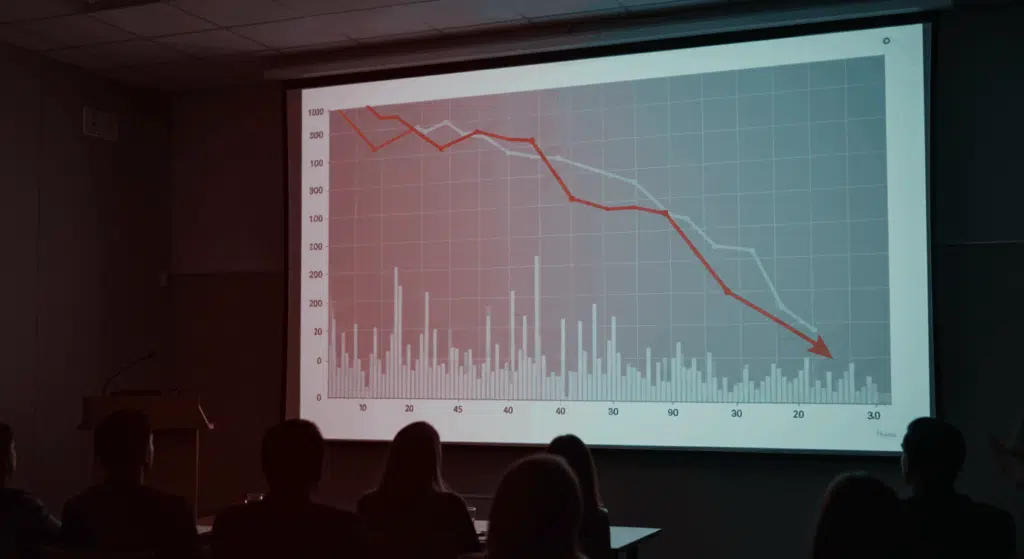The Psychology Behind Subscription Cancellations
Subscriber departure decisions rarely occur as sudden impulses but rather develop through progressive dissatisfaction stages. Agence Bunny research indicates that subscribers typically experience a 14-21 day consideration period before finalizing cancellation decisions. During this crucial window, strategic intervention opportunities exist for alert creators.
Understanding the psychological triggers that activate cancellation consideration provides creators with essential insight for developing effective prevention strategies. This comprehension extends beyond surface-level content preferences into deeper motivational factors.
Cancellation decisions frequently represent culminations of multiple small dissatisfactions rather than reactions to single negative experiences. This accumulation effect explains why subscribers often cannot articulate specific reasons for departures when surveyed post-cancellation.
The perception gap between creator expectations and subscriber reality constitutes a primary psychological driver of cancellation decisions. Addressing this misalignment requires systematic assessment of communication effectiveness rather than content adjustments alone.
Table des matières
Toggle
The Top Four Subscriber Cancellation Reasons
Content Inconsistency and Quality Fluctuations
Content delivery inconsistency ranks consistently as the primary factor driving subscription cancellations. Onlyfans agency statistical analysis reveals that subscribers value predictable posting schedules more highly than content quantity or even specific content types.
Schedule disruptions exceeding three days without prior notification correlate with 32% increased cancellation probability. This timing sensitivity reflects the subscription relationship’s foundation in reliable content access expectations.
Quality inconsistency generates more cancellations than consistent moderate-quality content. Subscribers demonstrate strong negative responses to perceived quality declines, interpreting inconsistency as diminishing creator investment rather than normal creative fluctuations.
Production value expectations establish baseline requirements that vary significantly across creator categories. Subscribers demonstrate category-specific quality standards that require benchmarking against comparable creators rather than platform-wide metrics.
Value Perception Imbalance
Value perception represents the critical balancing point between subscription price and content delivery. Onlyfans management company consultants identify this factor as the most adjustable cancellation driver through strategic pricing and content calibration.
Specific price thresholds trigger heightened value scrutiny, with subscriptions exceeding $14.99 demonstrating 27% higher cancellation sensitivity to perceived value imbalances. This threshold effect necessitates proportionally increased content quality and quantity at higher price points.
Value perception extends beyond raw content metrics into interaction quality and exclusivity factors. Subscribers frequently cite diminished personal connection rather than content dissatisfaction when explaining cancellation decisions at premium price points.
Competitive value comparisons significantly impact cancellation decisions, with subscribers increasingly cross-comparing creator offerings before finalization. This competitive assessment emphasizes the importance of market positioning awareness beyond individual account metrics.
Engagement Saturation and Content Fatigue
Content engagement cycles demonstrate predictable patterns across subscriber lifespans. Onlyfans modeling analytics identify typical engagement curves peaking between 60-90 days before natural decline phases begin without intervention.
Repetitive content structures accelerate fatigue onset regardless of production quality. Statistical evidence shows formula-based content production (consistent settings, interactions, and presentation styles) generates 41% faster engagement decline compared to varied approaches.
Category-specific content generates initial attraction but variation sustains long-term engagement. Subscribers demonstrate preference migration patterns throughout subscription tenure, requiring content evolution matching these shifting interests.
Content volume paradoxically correlates with accelerated fatigue when exceeding subscriber consumption capacity. High-volume creators experience elevated churn when posting frequencies surpass 8-10 weekly updates regardless of subscriber requests for “more content.”
Platform Competition and Subscriber Migration
Platform diversification continues transforming subscriber behavior patterns. Top Onlyfans models facing competitive pressure identify three primary competitor categories affecting retention: similar creators, alternative platforms, and mainstream entertainment options.
Direct competitor migration represents approximately 35% of identifiable cancellations, with subscribers frequently transferring subscription spending to similar creators rather than leaving the platform entirely. This migration pattern emphasizes competitive monitoring importance.
Alternative platform attraction accounts for approximately 28% of cancellations, with specialized content platforms demonstrating increased migration success against general OnlyFans subscriptions. This segmentation threat requires specific counter-positioning strategies.
Mainstream entertainment competition increasingly impacts subscriber retention as subscription service proliferation continues. Budget consolidation decisions frequently prioritize mainstream options over creator subscriptions during economic constraint periods.
Subscriber Segment-Specific Cancellation Patterns
Duration-Based Segments
First-month subscribers demonstrate distinctive cancellation triggers compared to established subscribers. New subscriber departures predominantly reflect expectation misalignment rather than content or engagement issues, requiring specialized onboarding approaches.
Mid-term subscribers (3-6 months) typically cancel due to engagement plateau experiences, with content variety and personal connection representing the primary retention leverage points for this critical segment.
Long-term subscribers (7+ months) demonstrate the highest sensitivity to perceived relationship violations through inconsistent communication or perceived diminished exclusivity. These established subscribers require relationship maintenance rather than content-focused retention strategies.
Duration-based segmentation enables precisely targeted retention approaches addressing specific cancellation drivers rather than generic prevention attempts. Onlyfans careers development professionals emphasize segment-specific strategy implementation as foundational to sustained growth.
Spending Pattern Segments
Transaction frequency provides critical insight into subscriber behavior patterns beyond subscription duration. High-interaction subscribers purchasing additional content demonstrate different cancellation triggers than subscription-only consumers.
Multiple-purchase subscribers show elevated retention rates except when experiencing payment processing issues or perceived pricing increases. This technically-sensitive segment requires particular attention to platform function rather than content considerations.
Subscription-only consumers demonstrate heightened sensitivity to content quantity perceptions, frequently citing “not enough content” as cancellation justification despite identical content access as continuing subscribers.
Price sensitivity segmentation reveals distinctive thresholds across subscriber categories. Budget-conscious subscribers exhibit 300% higher cancellation rates following even minor price adjustments compared to premium-tier consumers.
Communication Engagement Segments
Message engagement patterns provide predictive indicators for cancellation probability beyond content consumption metrics. Communication participation represents a significantly stronger retention predictor than passive content viewing statistics.
Active communicators demonstrate 67% lower cancellation rates compared to non-communicative subscribers consuming identical content. This correlation emphasizes the critical importance of two-way engagement beyond broadcast-style content delivery.
Communication initiation ratios (subscriber-initiated versus creator-initiated exchanges) provide essential insight into relationship health. Declining subscriber initiation frequently precedes cancellation by 10-14 days regardless of creator message frequency.
Message complexity and length patterns reveal engagement strength more accurately than simple response rates. Subscribers transitioning from detailed exchanges to short acknowledgments demonstrate classic pre-cancellation behavior requiring immediate intervention.
External Factors Influencing Cancellation Decisions
Economic Pressure Points
Subscription spending consistently demonstrates sensitivity to broader economic conditions. Monthly cancellation rates show statistically significant correlation with regional economic indicators, particularly unemployment rates and consumer confidence metrics.
Payment timing analysis reveals increased cancellations clustering around common financial stress periods including rent due dates and utility payment cycles. This calendar effect provides important scheduling considerations for retention campaigns.
Price sensitivity fluctuates predictably throughout economic cycles, requiring dynamic adjustment strategies rather than static pricing models. Economic downturn periods necessitate enhanced value demonstration rather than price competition against other subscription services.
Discretionary spending category competition intensifies during economic constraint periods. Creator subscriptions face increased justification requirements against essential subscriptions including streaming services and digital access fees.
Seasonal Variability Patterns
Subscription behavior demonstrates consistent seasonal patterns requiring strategic planning. Annual analysis reveals predictable cancellation increase periods aligning with academic calendars, holiday seasons, and regional vacation cycles.
Summer months (June-August) typically show 12-18% elevated cancellation rates across most creator categories. This seasonal effect necessitates proactive retention campaigns rather than reactive responses to predictable fluctuations.
Holiday seasons generate distinctive pattern disruptions requiring specialized retention approaches. December demonstrates both the highest new subscription and highest cancellation rates annually, creating complex management requirements.
Seasonal content alignment significantly impacts retention during transitional periods. Creators maintaining seasonal relevance experience 23% lower cancellation rates during typical high-departure timeframes compared to static content approaches.
Platform Policy and Technical Factors
Platform policy adjustments generate measurable cancellation effects independent of creator actions. Policy announcement periods typically show 15-20% increased cancellation rates regardless of actual impact on specific accounts.
Payment processing issues represent a leading technical cause of involuntary churn. Card update failures account for approximately 18% of all subscription terminations, requiring systematic recovery processes rather than content-based reacquisition approaches.
Platform interface changes impact user experience satisfaction, with major updates frequently triggering evaluation periods followed by cancellation clusters. This platform effect requires proactive communication rather than reactive explanation.
Technical accessibility issues disproportionately impact mobile-primary users. Performance degradation on specific devices or operating systems creates segment-specific cancellation spikes requiring platform-specific solutions rather than content adjustments.
Identifying Your Specific Churn Causes
Cancellation Pattern Analysis
Effective cause identification requires systematic analysis methodologies rather than anecdotal assessment. Pattern recognition through time-series analysis reveals cancellation clusters indicating specific trigger events requiring investigation.
Day-of-week cancellation distribution provides valuable scheduling insights. Statistical evidence shows Sunday evening demonstrates the highest voluntary cancellation rates while Wednesday shows the lowest, creating important timing considerations for retention content.
Subscriber cohort analysis reveals creator-specific patterns differing from platform averages. Acquisition source frequently predicts cancellation timing, with social media-sourced subscribers demonstrating different retention patterns than existing-follower conversions.
Multi-variable pattern analysis combining cancellation timing with content response metrics reveals cause-effect relationships invisible through single-dimension assessment. This comprehensive approach identifies specific content types or engagement practices generating negative retention impacts.
Exit Survey Implementation
Structured exit feedback systems provide essential cancellation cause data unavailable through analytics alone. Properly designed exit surveys demonstrate 23-31% response rates when implemented through strategic timing and incentive structures.
Question design significantly impacts response validity. Open-ended questioning produces more actionable feedback compared to preset option selections, particularly regarding content and engagement perceptions.
Timing sensitivity impacts response rates and feedback quality. Survey delivery within 24 hours of cancellation generates 3x higher response rates compared to delayed inquiries, creating narrow implementation windows.
Incentive structures demonstrating 40-50% response rate effectiveness include reduced resubscription offers, exclusive content access, and priority support promises. These motivation systems balance response generation against survey validity considerations.
Competitor Analysis Frameworks
Systematic competitor monitoring provides essential context for cancellation pattern interpretation. Regular competitor content analysis enables differentiation assessment against subscriber migration destinations.
Pricing structure comparison against both direct and indirect competitors reveals potential value perception imbalances driving cancellations. This economic positioning assessment extends beyond simple price point analysis into comprehensive value delivery evaluation.
Engagement practice examination focusing on competitor communication styles and response systems identifies potential experience gaps driving subscriber migration. Communication effectiveness frequently outweighs content quality in retention impact.
Promotional timing correlation analysis comparing competitor marketing with account cancellation patterns reveals potential causative relationships requiring counter-positioning. Strategic timing adjustments demonstrate significant effectiveness against competitor-driven churn.
Conclusion
Understanding the specific causes driving subscriber cancellations transforms reactive retention into strategic prevention. Through systematic analysis of psychological triggers, segment-specific patterns, and external influences, creators establish the essential foundation for developing targeted countermeasures.
The causative patterns identified through proper analysis reveal specific intervention points where retention efforts yield maximum effectiveness. This precise targeting enables resource optimization rather than broad-spectrum approaches with diminished efficiency.
In our final installment, we will examine the specific strategic interventions demonstrating highest effectiveness against each cancellation cause identified. These proven countermeasures provide creators with comprehensive retention systems addressing the entire subscriber lifecycle.
